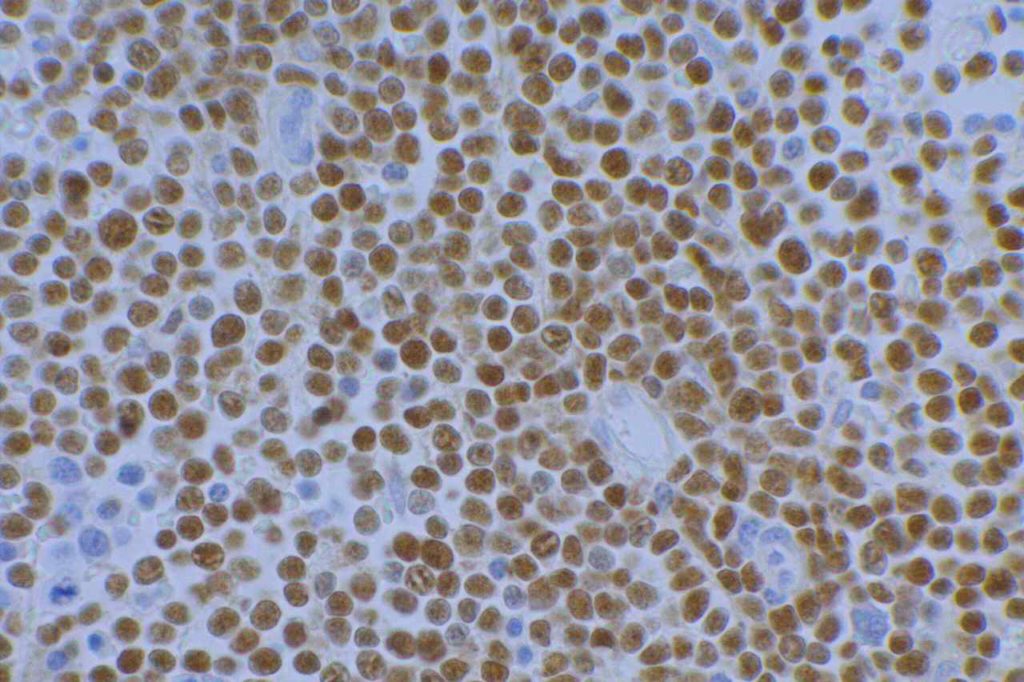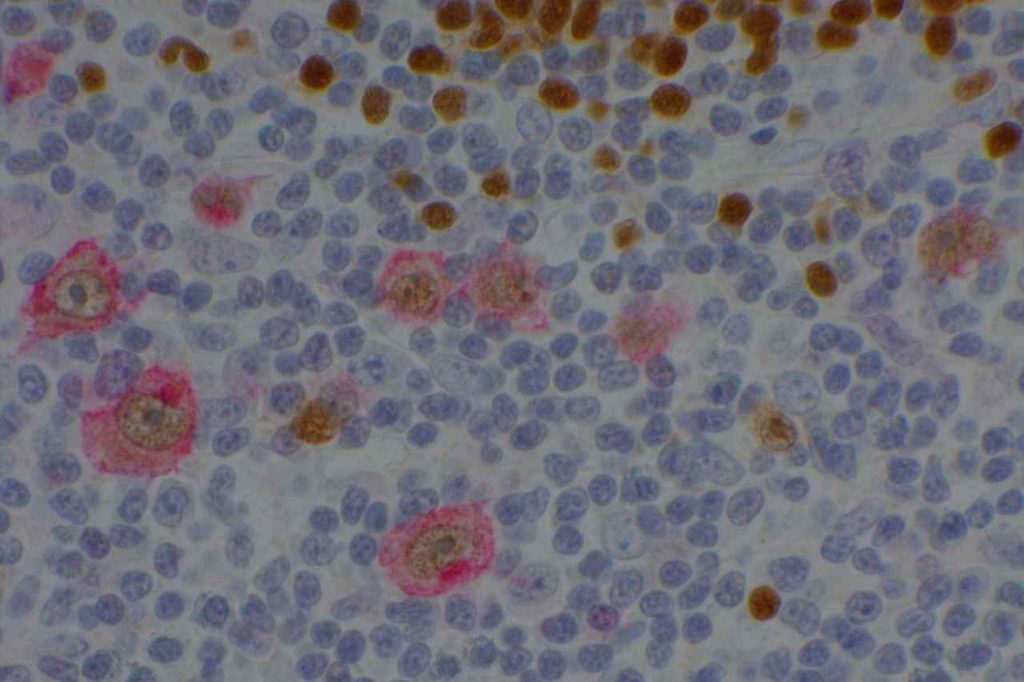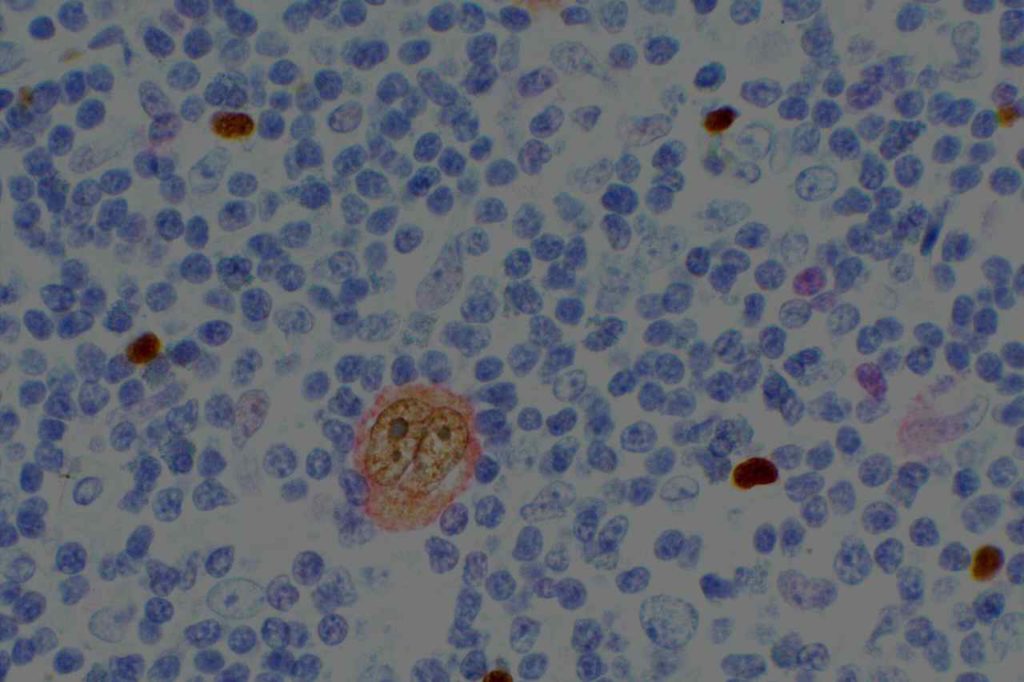PAX-5 (B-cell specific activator protein: BSAP) is a nuclear transcription marker that is normally found onPre-B and mature B-lymphocytes (not plasma cells). Expression is seen in Pre-B ALL, B-cell lymphomas and classical Hodgkin lymphoma (>90%, dimmer expression compared to background B-cells), but not plasmacytomas. It should be noted that some cases of small cell carcinoma (73%), Merkel cell carcinoma (93%), and alveolar rhabdomyosarcoma may show PAX-5 expression.
PAX-5 is particularly useful in evaluating cases of B-cell lymphomas, which have been treated with rituximab. At some point during treatment, approximately 20% of these cases treated with rituximab therapy may lose expression of CD20 (flow cytometry appears to be more sensitive in detecting down regulation of CD20 with rituximab therapy). PAX-5 is helpful in identifying such B-cell with loss of CD20 expression. This is important clinically, because such cases may not respond to additional rituximab therapy. It is important to note that there may be down regulation of other B-cell markers with rituximab therapy. In a relatively small set of cases by Chu, PG, et al, PAX-5 expression was present in 21 of 24 cases of CD20 negative mature B-cell neoplasms treated with rituximab. Therefore, a panel of B-cell markers may be needed in cases treated with rituximab.
PAX-5 Expression
- Precursor B ALL
- Precursor B cells
- Mature B-cells
- B-cell Lymphomas
- CD20 negative B-cell Lymphomas
- AML (subet, t(8;21))
- Hodgkin Lymphoma (dim)
- Small Cell Carcinoma (73%)
- Merkel Cell Carcinoma (93%)
- Alveolar Rhabdomyosarcoma
Microscopic Images



References
Hadi Yaziji, AIMM Annual Meeting, “New Antibodies in Diagnostic Immunohistochemistry”, presentation, 2010.
AJSP 2005;29:687
Bone Marrow IHC. Torlakovic, EE, et. al. American Society for Clinical Pathology Pathology Press © 2009. pp. 221.
Chu, P. G., Loera, S., Huang, Q., & Weiss, L. M. (2006). Lineage Determination of CD20- B-Cell Neoplasms: An Immunohistochemical Study. American Journal of Clinical Pathology, 126(4), 534–544. doi:10.1309/3WG32YRAMQ7RB9D4
